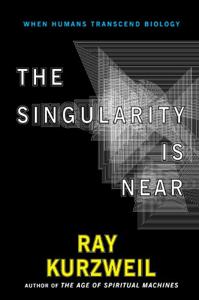
Want to learn the ideas in The Singularity Is Near better than ever? Read the world’s #1 book summary of The Singularity Is Near by Ray Kurzweil here.
Read a brief 1-Page Summary or watch video summaries curated by our expert team. Note: this book guide is not affiliated with or endorsed by the publisher or author, and we always encourage you to purchase and read the full book.
Video Summaries of The Singularity Is Near
We’ve scoured the Internet for the very best videos on The Singularity Is Near, from high-quality videos summaries to interviews or commentary by Ray Kurzweil.
1-Page Summary of The Singularity Is Near
Overview
Can you remember the scene in The Matrix where Neo learns kung fu? What if we could learn knowledge like a basic software program?
Technology is evolving very fast, and it will soon be so advanced that we can overcome aging and disease. Computers will become smarter than all of humanity combined, and biology and technology will be one in the same.
It’s not hundreds of years off in the future. It’s near and happening now.
In this article, you’ll learn how to make supercomputers using DNA; why sunburns will be a thing of the past in the future; and how we can all become more like Spock from Star Trek.
Big Idea #1: Evolution is picking up speed. Each development builds and moves faster ahead than the last.
When you think about how much technology has changed during your grandparents’ lifetimes, it’s amazing to consider the changes we’ve seen over just the last 15 years. It’s clear that things are changing more rapidly as time goes on. History shows us that change is accelerating exponentially. For example, there was only 200 million years between the first mammals and when humans evolved.
If you were to graph the development of life on earth, you’d see that it evolves at an increasingly faster pace. The same can be said for the evolution of technology.
Technology is also changing rapidly. People used to make discoveries at a much slower rate, but now they’re happening every year. For example, it’s hard to name all the technological developments of just last year because there were so many.
Computers are getting faster at a fast rate. In the past, it took three years for computer speed to double in price. Now, it takes two years for that to happen and soon one year.
Technology is growing at a rapid rate. This growth pattern is known as the Law of Accelerating Returns and it’s happening due to exponential development in technology.
Success in one area leads to other areas of success. For example, evolution led to humans and humans created technology. The best technology is used to create even better technology. It follows then that the most advanced computers will eventually be able to design superior technology themselves and speed up technological evolution.”
Big Idea #2: Computers are making leaps and bounds in speed and processing power. DNA computing is near.
Computers are evolving rapidly. As they get smaller, they also become faster and more powerful. However, there is a limit to how small computers can be made with silicon technology. They will eventually reach their limits, so new technologies are being developed to overcome this problem.
Nanotubes are a new technology that can be used to make computers run faster. They’re tiny cylinders made out of sheets of carbon atoms, and electrons pass through them easily. This means data can be transmitted more quickly than with conventional transistors in today’s computer chips. In fact, the theoretical speed limit for nanotube-based transistor computers could reach 100 times that of current ones!
Nanotubes are a great advantage for computer chips. Many of them can fit onto one chip, which speeds up performance and avoids losses typical of scaled-down silicon chips. Other advances in 3D computer chips and DNA computing are expected to improve the capabilities of computers even more.
Connections inside a chip are shorter than connections between chips. This massively increases processing speed, because data doesn’t have to travel so far to execute a computation. Although DNA computing is still in its early stages, it could transform the future of computers by offering huge memory capacity at low cost and low power consumption.





